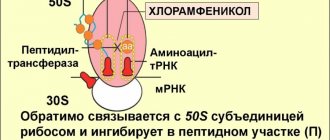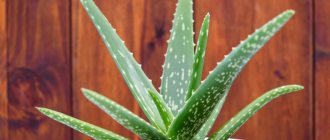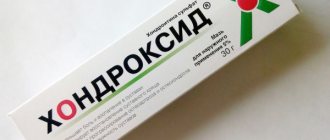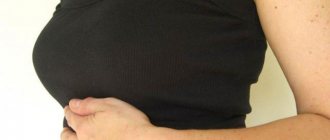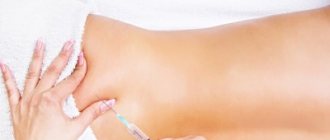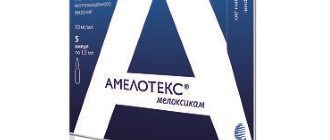When treating bronchitis, pharyngitis, laryngitis, tracheobronchitis, bronchial asthma, acute, chronic, obstructive bronchitis in adults and children, it is very effective to use various inhalations of drugs, special solutions, and medicinal herbs as part of complex therapy.
It is especially convenient to carry out inhalations for bronchitis using an ultrasonic inhaler - a nebulizer, a compressor inhaler, of which there is a fairly wide selection in pharmacy chains.
The peculiarity of their use is that not all of them can use oily and herbal solutions, but only purified special pharmaceutical medicinal solutions or mineral water. So, there are 2 ways to carry out inhalations:
- Using special devices - inhalers, nebulizers (ultrasonic type, compressor, combined)
- Steam inhalations - using a container and a hot medicinal solution or using a kettle with a paper funnel placed on the spout of the kettle.
The main objective of inhalation therapy in the treatment of diseases of the respiratory system:
- liquefaction of discharge from the larynx, pharynx, nose
- moisturizing the mucous membrane of the respiratory tract
- when using medications - bronchodilator, expectorant, anti-inflammatory, antibacterial, decongestant
- improving blood supply and microcirculation of the mucous membrane - this helps in rapid tissue regeneration
Important! In the presence of inflammatory processes of a purulent nature - tonsillitis, sinusitis, sinusitis, hot steam inhalations cannot be used, since during purulent processes, heating promotes faster growth of pathogenic microorganisms. Steam inhalations can be used only for prolonged runny nose, pharyngitis (without purulent foci), laryngitis.
What can and cannot be put into a nebulizer?
The nebulizer can be filled with solutions of medications to treat respiratory diseases, but a number of drugs cannot be used due to pharmacological and physical characteristics (see table).
| Goal of treatment | Allowed | Forbidden |
| Elimination of bronchospasm, asthma attacks | Berodual solution for inhalation, Ventolin nebula | Papaverine, Euphyllin (act only after entering the blood) |
| Mucus thinning | ACC injection, Fluimucil solution | Acetylcysteine syrup (due to sugar ingestion) |
| Bronchial cleansing, expectoration | Ambrobene solution, Lazolvan solution | Cough syrups (due to sugar ingestion) |
| Treatment of bronchial asthma with hormones | Pulmicort nebula, Budenit nebula | Prednisolone or Dexamethasone ampoules (have a systemic effect) |
| Antiseptic effect (disinfection) | Decasan, Dioxidin, Miramistin, Chlorophyllipt alcohol solution | Oil solution of chlorophyllipt (oil clogs bronchioles and alveoli) |
| Killing bacteria (antibiotics) | Gentamicin solution, Fluimucil antibiotic | Ampicillin, Benzylpenicillin (no local action) |
| Treatment of a viral infection | Interferon, Derinat | Syrups, herbal decoctions, essential oils, suspensions (not suitable for spraying through a nebulizer, they worsen breathing) |
Can I have some water?
Water is not used to refill the nebulizer, even in purified and boiled form, since it is impossible to exclude the ingress of impurities and small particles invisible to the eye. This causes difficulty breathing, which delays the healing process. To dilute medications, only sterile saline solution is used. It can also be a remedy for allergic diseases, viscous, difficult to separate sputum in pregnant women and young children.
Non-carbonated mineral water is allowed for inhalation through a nebulizer for colds and runny nose, but it is necessary that the size of the sprayed particles be more than 3 microns. The function of changing the dispersion (degree of grinding) is not available in all devices, so it is better to use the pharmaceutical preparation Soda Buffer for alkaline procedures.
The ingress of non-sterile mineral water into the smallest parts of the bronchi is especially dangerous if the immune system is reduced; it can cause an inflammatory process.
We recommend reading about how to do inhalations with a nebulizer. From the article you will learn about when you need to do inhalations, the procedure algorithm, how to care for the device afterwards, and how to breathe correctly when inhaling with a nebulizer. And here is more information about whether it is possible to do inhalations at a temperature.
Is there a difference if the inhaler is a compressor?
A compressor inhaler crushes liquid into small particles using a stream of air pumped by a compressor under pressure. In this case, the structure of the drug does not change. Therefore, it is considered the most versatile device. Ultrasound devices destroy antibiotics and hormones, but they are suitable for all other drugs.
A MESH inhaler is considered a good option for the treatment of chronic diseases of the bronchi and lungs. It is a combination of compressor and ultrasonic. It is small in size and can be carried with you. The disadvantage is the price, it is almost 2 times higher than for other nebulizers.
Little Doctor mesh nebulizer
Procedures you can do without
Very often, after visiting a doctor, patients go to the pharmacy with a huge list of medications. Of these, half are auxiliary products with questionable effectiveness. In addition, folk remedies are often prescribed to combat wet coughs, which is unacceptable for severe diseases of the lower respiratory tract.
What you can do without:
- Mineral water Borjomi, Esentuki, Narzan. The direct purpose of the drinks is to restore the acid-base balance in the gastrointestinal tract. Used for the treatment and prevention of diseases of the digestive system. None of the packaging indicates that you can use water through a nebulizer. The patient carries out treatment in this way at his own peril and risk. Mineral water can be poured into a steam inhaler; it is used to moisturize the mucous membrane of the upper respiratory tract.
- Baking soda. Inhalations with soda during a wet cough are recommended to thin the mucus and facilitate its removal. The solution is prepared using boiled water. When using a nebulizer, such a medicine is unacceptable, since all ingredients must be sterile. It is recommended to use exclusively saline solution as a solvent. If a self-prepared medication turns out to be unsterile, pathogenic microorganisms enter the lower respiratory tract. Inflammation begins and painful symptoms intensify.
- Immunostimulants. Drugs administered by inhalation have questionable effectiveness. It is impossible to check whether the prescribed medicine is working. Recovery occurs with the help of basic medications. Inhalation procedures with immunostimulants are unnecessary. You need to increase the body's protective functions with the help of vitamins, proper nutrition, and fresh air. The most interesting thing is that immunostimulants cost a lot of money and are classified as homeopathic medicines. The most commonly prescribed drugs are Interferon and Sinupret.
Do not pour solutions based on medicinal herbs into the nebulizer bowl.
How to refill an inhaler: do you need to dilute the drugs, where to pour them and how?
The inhaler should be refilled with medicine only as prescribed by the doctor, since it is necessary to know the exact dose of the drug. This is especially important for potent drugs - hormones, bronchodilators and antibiotics.
The required volume of medication is drawn into a 5 or 10 ml syringe and a sterile solution of 0.9% sodium chloride is added to 2-3 ml for a child and 4-6 ml for an adult. Some drugs (for example, Pulmicort or Ventolin nebula) do not require dilution.
The most important thing during inhalation is not the ratio and proportions, but the amount of medication entering the respiratory tract; it may differ depending on:
- severity of the disease;
- age;
- concomitant diseases;
- simultaneous use of drugs orally or in injections.
№1 №2 №3 №4 №5 №6
Before the procedure, it is recommended to warm the inhalation solution to body temperature so as not to cause a reflex spasm of the bronchi in response to the cold aerosol. To do this, the syringe is immersed in water at a temperature of 37 degrees for 5 minutes.
Then its contents are released into the liquid container of the nebulizer, an air tube, a mask or nasal nozzle, and a mouthpiece are connected, and the spray is turned on. It is recommended to always prepare a new solution, and the remaining liquid in the container must be poured out, washed with warm water and soap, and dried before the next session.
Watch this video on how to properly perform inhalations:
How to refill a nebulizer for a cough
If you have a cough, you can fill the inhaler with drugs with an expectorant effect based on ambroxol (Lazolvan, Ambrobene) and sputum thinners (Fluimucil, ACC injection). For a child at the initial stage of the disease, the use of herbal remedies is allowed - Propolis tincture or Gedelix drops
What to give to a child
You can put ready-made herbal medicines into a nebulizer for your child. Inhalations with alcohol extracts are used for colds, but they are contraindicated for allergies. Even in the absence of previous allergic reactions, the first session should be done with half the dose and the child’s reaction should be assessed. If your cough worsens or your breathing becomes difficult, you should not continue inhaling this medication.
If well tolerated, the procedures are carried out 2-3 times a day for 5-7 days. Up to 2 years, any drug (even natural) is prescribed only by a doctor.
For one procedure you will need:
- 3 ml of diluted propolis tincture (add 20 ml of saline solution per 1 ml);
- 3 ml of solution of Hedelix drops (1 ml of the drug and 2 ml of saline solution).
If medications are recommended, they are diluted with 0.9% sodium chloride 1:1, taken 1 time in the following dosages:
- Ambrobene or Lazolvan: up to 2 years 1 ml, from 2 to 12 years 2 ml, at older ages 3 ml;
- ACC injection or Fluimucil: from 2 to 6 years 2 ml, from 6 years – 2-3 ml.
There are 1-2 sessions per day lasting up to 5 minutes. In total, a course of treatment requires 10 to 15 procedures.
What will help an adult
For adult patients, the same drugs are used for coughing as for children, but in different dosages; for one session you will need:
- Fluimucil – 3 ml and 3 ml saline;
- Ambrobene (Lazolvan) – 2-3 ml and 3 ml of saline solution;
- Gedelix drops – 2 ml and 2 ml saline solution.
What is possible during pregnancy
In the first 3 months of pregnancy, saline solution, buffer soda and sea water (Sialor Aqua) are allowed. Inhalation of Miramistin is allowed for 5 days. From the second trimester, you can be treated with Ambrobene, and from the third, the doctor, if necessary, prescribes Fluimucil antibiotic. Self-medication is strictly contraindicated, since incorrect, insufficient therapy disrupts the development of the fetus, as does the use of many medications.
Solutions with essential oils
A nebulizer for children against cough and runny nose is not recommended when using oil solutions. They are sprayed into many microscopic particles that easily fall into the most remote areas of the respiratory system.
There is a high probability that the treatment will turn into pneumonia (oil pneumonia), a very dangerous disease that often ends in death. It is not advisable to combine essential oils with a nebulizer for people suffering from allergies. Particles of the solution will settle in the lungs and can easily cause a rejection reaction by the body.
It is better to carry out this treatment using a steam inhaler. But there are types of nebulizers on which the use of aromatic oils and their solutions is allowed. This should be a modern inhalation device with the function of regulating the size of the sprayed particles. You should set no more than 10 microns.
This treatment is contraindicated for children. In adults it is used mainly for the treatment of the upper parts of the system. In this case, the oil cannot be taken concentrated, it must be diluted (10 drops/200 ml of saline solution). 3 ml is enough for one session. You need to purchase the product at a pharmacy.
For coughs and runny noses, aromatherapy using hot baths, massage, rubbing, and application to the temples and chest area is allowed. The following oils are suitable for this: eucalyptus, peppermint, lavender, citrus fruits (lemon, tangerine, grapefruit).
What drugs are used in the nebulizer?
The doctor chooses the drug that is poured into the nebulizer, depending on the purpose of treatment. It is also important to take into account the method of inhalation - for example, for a runny nose and sinusitis, adenoids, it is better to breathe through nasal cannulas, and for procedures for a sore throat, sore throat and laryngitis, a mouthpiece is suitable. The mask is universal; it is most often used in young children for asthma and bronchitis.
With a runny nose
In case of acute runny nose against the background of a cold, inhalations with Furacilin solution, saline solution, Fluimucil, eucalyptus tincture are prescribed, and in the midst of an ARVI epidemic, Interferon is used. There are 2-3 sessions per day for 3-5 days. Doses for adults and children are shown in the table.
| A drug | How to prepare a medication solution | For an adult | For a child | ||
| Medicine volume | Volume of saline solution | Medicine volume | Volume of saline solution | ||
| Furacilin | One tablet per 100 ml of boiling saline until completely dissolved | 4 ml | Not needed | 3 ml | 1 ml |
| Saline solution | Ready drug | — | 4 ml | — | 3 ml |
| Interferon | Add 2 ml of water for injection to the ampoule | 2 ml | 1 ml | 2 ml | 1 ml |
| Eucalyptus tincture | 15 drops per 200 ml saline solution | 3 ml | 1 ml | 2 ml | 2 ml |
| Fluimucil | Ready solution | 3 ml | 1 ml | 1-2 ml | 2 ml |
For bronchitis
Inflammation of the bronchi can have different origins, so for effective treatment it is necessary to establish a diagnosis. The most commonly used drugs for bronchitis and doses for adults/children per 1 inhalation:
- purulent – Gentamicin 4% solution 0.5 ml/0.25 ml;
- non-purulent acute or exacerbation of chronic – Ambrobene 2-3 ml/1-2 ml;
- complicated course, risk of spread to the lungs - Fluimucil antibiotic 2.5 ml/1.25 ml;
- obstructive (with bronchospasm) – Berodual 2 ml/0.5-1 ml;
- allergic – Cromohexal 2-4 ml/1-2 ml;
- with an asthmatic component - Pulmicort 0.5-1 mg (volume depends on the release form).
Pulmicort Gentamicin Fluimucil antibiotic Cromohexal Ambrobene Berodual
In all cases, the volume is adjusted to 2-4 ml with saline solution, 2-3 inhalations are prescribed per day, the course of treatment is 5-7 days for an acute process and 1-2 weeks for a chronic one.
For sore throat
To relieve pain in mild inflammation, Ambrobene or Lazolvan (1-3 ml per session) is used at the very beginning of an acute respiratory infection; it has a local anesthetic and some antimicrobial effect.
In case of intense inflammatory process, it is necessary to use antiseptics; the most universal remedy is Miramistin solution. It helps with viral, fungal and bacterial infections. The dose for an adult is 4 ml (no need to dilute), and a child takes 1-2 ml of the drug and 3 ml of saline solution.
For sinusitis
If there is purulent inflammation in the maxillary cavity, then an adult is often prescribed inhalations with Dioxidin 1 ml with 4 ml of saline; for children it is allowed only from 12 years old, and up to 18 years old no more than 0.5 ml is used at a time. The procedures are carried out twice a day for 7-10 days.
For exacerbation of chronic sinusitis, use the homeopathic herbal medicine Sinupret (gentian, primrose, verbena, elderflower). It relieves swelling and restores outflow from the maxillary sinus. Diluted with saline solution: for one session take 1 ml and 3 ml of saline solution for a child and 2 ml of components for an adult. Inhalation is done 2-3 times a day for about a week.
For asthma
For the treatment of bronchial asthma, two main groups of drugs are used (bronchodilators and hormones), their dosages and frequency of use are indicated in the table.
| Name | Compound | Action | Dose for a child | Adult dose | Minimum and maximum number of inhalations per day |
| Berodual | Fenoterol and ipratropium bromide | Dilates the bronchi | 10-20 drops per 3 ml of saline solution | 30-40 drops per 3-4 ml of saline solution | 1-4 times |
| Berotek | Fenoterol | Dilates the bronchi | 5-10 drops per 3 ml of saline solution | 10-20 drops per 3 ml of saline solution | 1-4 times (interval of at least 4 hours) |
| Ventolin nebula | Salbutamol | Dilates the bronchi | 1.25-2.5 ml undiluted | 2.5 ml undiluted | Up to 4 times with an interval of at least 6 hours |
| Pulmicort | Budesonide | Relieves inflammation, hormone | 1 ml of solution 0.25/ml per 2 ml of saline solution | 4 ml of solution 0.25/ml or 2 ml of solution 0.5/ml undiluted | 1-3 |
For adenoids
Since growths of lymphoid tissue (adenoids) in most cases occur in a child, drugs approved for children are used (doses for 1 session):
- Miramistin 1-2 ml and 2 ml saline;
- isotonic sodium chloride solution – 2-3 ml;
- Sea water (Lin Aqua Baby) – 2-4 ml;
- Fluimucil – 1-2 ml;
- Pulmicort 1-2 ml of solution 0.25/ml.
2 sessions are prescribed per day, the course can last from 5 to 15 days.
For laryngitis
For laryngitis (inflammation of the larynx), the following nebulizer sprays can be used:
- Soda buffer – 3-5 ml per 1 session or saline solution;
- antibiotics – Gentamicin, Fluimucil antibiotic;
- antiseptics – Dekasan, Dioxidin, Miramistin;
- mucolytics – Fluimucil, ACC-inject;
- antiviral – Interferon, Derinat;
- hormones – Pulmicort;
- anti-inflammatory - Rotocan, Chlorophyllipt.
Soda buffer Dekasan Derinat
For sore throat
Antiseptic aerosols are considered the most effective inhalations for the treatment of sore throat. They destroy germs that cause inflammation, reduce swelling and sore throat. For an adult, per procedure, take 3 ml of saline solution and one of the following drugs:
- Miramistin – 3 ml,
- Dioxidin – 1 ml,
- Dekasan – 3 ml,
- Chlorophyllipt alcohol – 0.3 ml,
- Malavit – 0.1 ml.
Chlorophyllipt Malavit
Children can use 1-2 ml of Miramistin with 2 ml of saline solution or the homeopathic drug Tonzilgon N (with marshmallow root, chamomile, yarrow and St. John's wort) in the same proportion. The procedures are carried out 2-3 times a day for 5-7 days.
Price policy
Domestic drugs tend to be cheaper. The action is identical. But patients note the presence of side effects, so many still choose expensive drugs from imported manufacturers.
| A drug | Minimum price in rubles |
| Mukolwan | 149 |
| Ambrobene | 123 |
| Ambroxol | 288 |
| Lazolvan | 161 |
| Pulmozyme | 1480 |
| Fluimucil | 119 |
| Ventolin Nebula | 276 |
| Salbutamol | 50 |
| Astalin | 138 |
| Salgim | 1284 |
| Berotek | 98 |
| Berodual | 240 |
| Atrovent | 230 |
| Pulmicort | 398 |
| Cromohexal | 163 |
| Budenit | 707 |
| Tafen Nazal | 318 |
The issue of replacing one drug with another should be discussed with a specialist. The shelf life of medicines is 2-3 years from the date of manufacture, the prepared solution is from 30 minutes to 8 hours.
You need to breathe through a nebulizer if syrups, tablets, and mixtures do not give the desired result.
What does an inhaler help with?
A nebulizer-type inhaler is used to treat respiratory diseases; the procedures help with:
- runny nose with rhinitis, sinusitis, allergies;
- sore throat (sore throat, pharyngitis);
- loss of voice, cough (laryngitis, laryngotracheitis);
- difficulty breathing, paroxysmal cough due to bronchial asthma, obstructive bronchitis or bronchospasm due to lung diseases;
- smoker's cough.
Laryngitis
Benefits of a nebulizer:
- can treat patients of all ages, including those with weakened breathing;
- there is no need to adjust the inhalation to the aerosol flow (as in metered-dose inhalers, canisters for bronchospasm);
- used at home;
- suitable for many drugs;
- quickly deliver medicine to its destination;
- it is possible to accurately dose the amount of medication and its location of deposition;
- aerosols penetrate into the deepest parts of the bronchi and reach the alveoli of the lungs;
- durable.
What to use for inhalation and how to do it if you don’t have a nebulizer at home
If you don’t have a nebulizer, you can use improvised means for inhalation:
- a bowl or saucepan (the head is covered with a towel);
- thermos with a funnel attachment for pouring liquid;
- heat-moisture device.
Heat-wet inhaler
All these methods allow you to carry out only thermal (steam) procedures; they do not use medications, and decoctions and infusions of herbs, essential oils and other folk remedies are used as a medicinal solution. For example, the following compositions will help with cough:
- to 500 ml of boiling water add a tablespoon of herbs or a mixture in equal parts: oregano, chamomile, thyme, calendula flowers, leave for 30 minutes;
- add a tablespoon of salt and soda and 3 drops of tea tree or sage essential oil to 500 ml of hot water (45-50 degrees);
- For 300 ml of hot water you will need a teaspoon of eucalyptus tincture;
- Golden Star balm the size of a match head and a teaspoon of soda are placed in half a liter of water at a temperature of 45 degrees.
For a runny nose and sore throat (the first signs of a cold), mix with 0.5 liters of hot water (choose one of the options):
- tea tree and sage oils – 2 drops each;
- two cloves of garlic (pressed through a garlic press);
- a teaspoon of tincture of propolis or eucalyptus, calendula;
- Validol tablet or the contents of 1 capsule and 15 drops of Rotokan.
Watch this video about what is best to do inhalations with:
Folk remedies and recipes for coughs with bronchitis
Traditional medicine uses recipes from herbal infusions to treat coughs. The most common herbs that you can breathe in are chamomile, calendula, coltsfoot, pine needles, mint, linden, eucalyptus, and sage. The infusion of each herb is prepared separately; the ingredients are mixed only before use. Usually concentrated solutions are not used; it is recommended to dilute them with mineral water or saline solution.
Some herbs can cause allergies; stop the procedure at the first sign of discomfort!
Inhalations with herbal infusions relieve inflammation and usually moisturize the nasopharynx, but you need to carefully study the effect of each plant: for example, for a dry cough, eucalyptus or sage are not recommended, they dry out the respiratory tract. However, they cope perfectly with wet coughs.
Now in pharmacies you can buy ready-made alcohol tinctures of a wide variety of plant extracts that are suitable for use in a nebulizer.
Contraindications to inhalations
Inhalation therapy is prohibited at temperatures above 37 degrees (steam) and 37.5 - nebulizer. If the doctor still recommends treatment, then before the procedure you need to take antipyretics and wait until the fever is eliminated. All types of inhalations are contraindicated if:
- bleeding from the nose, lungs;
- high blood pressure;
- heart rhythm disturbances;
- suffered a heart attack, stroke, injury or chest surgery in the current month;
- severe general condition of patients;
- tuberculosis in the active phase.
There are also restrictions on the use of medications:
- intolerance;
- severe kidney and liver diseases (Dioxidin, alcohol solutions);
- pregnancy, lactation (with caution Lazolvan, Dioxidin, Fluimucil).
Complications of inhalation
Most often, inhalations cause allergic reactions, they manifest themselves in:
- deterioration of breathing;
- sore throat;
- increased or new cough;
- itchy skin;
- bronchospasm with an attack of suffocation.
If any of the symptoms occur, stop administering the drug and consult a doctor. Long-term use of hormones can cause oral thrush and a tendency to frequent infections. Drugs to dilate the bronchi often provoke palpitations, tremors in the hands, and headaches.
We recommend reading about the main types of inhalers. From the article you will learn about what inhalers are used for, their mechanism of action, types of inhalers for children and their characteristics. And here is more information about what inhalations are allowed during pregnancy.
For the nebulizer, drugs are used - solutions for inhalation with anti-inflammatory, bronchodilator and expectorant effects. If you don’t have a device, you can do steam procedures, but they are less effective and are prohibited at elevated temperatures.
